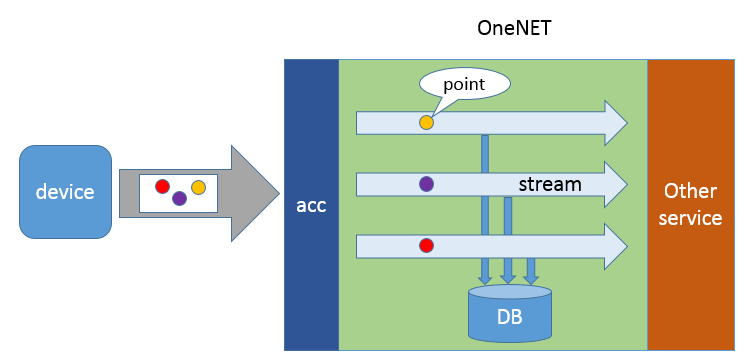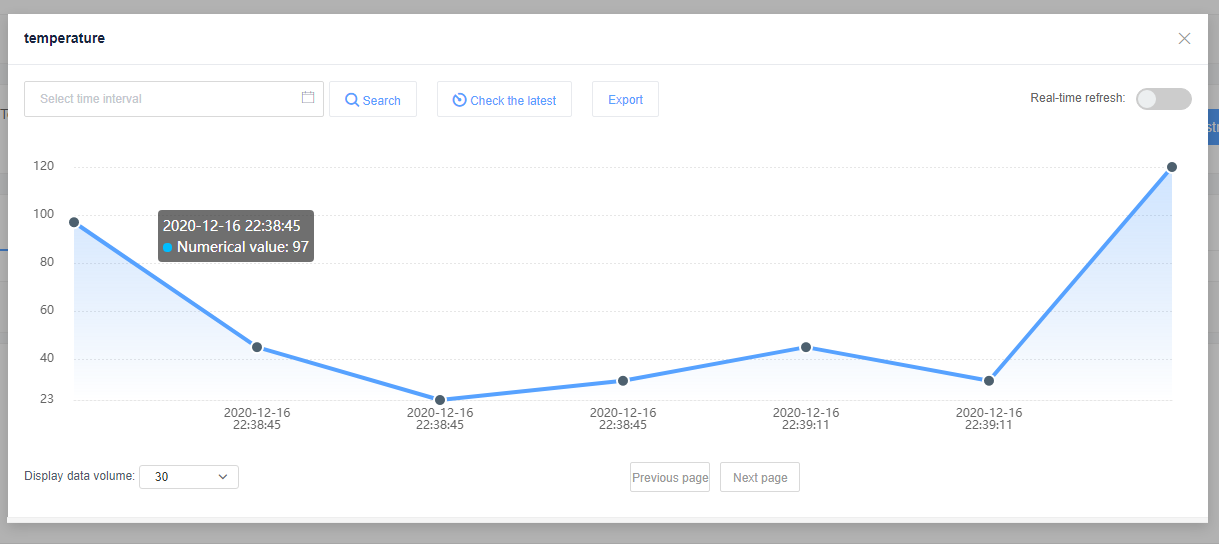
Data streams and data points
The platform organizes uplink data by data streams and data points, as shown below:

Data Storage
When the device is used to upload and store data, the data must be uploaded in the key-value format, in which the key is the data stream name, and the value is the actually stored data point in a custom format (e.g. int, float, string, and json).
In practice, data streams can be used to classify and describe certain attribute data of a device, such as temperature, humidity, coordinates and other information. Users can customize the range of data streams and classify highly correlated data as a data stream.
Streaming data are stored in chronological order by default, and users can query the values of data points from the data stream at different times, as shown below:

Data Flow Direction
The data in the data stream can “flow” to subsequent services during storage. The data stream is one of the service objects of the rule engine. Users can select the data source of the rule engine by setting the data stream mode, and configure the flow direction of the data stream. For more details, see the “Rule Engine”.